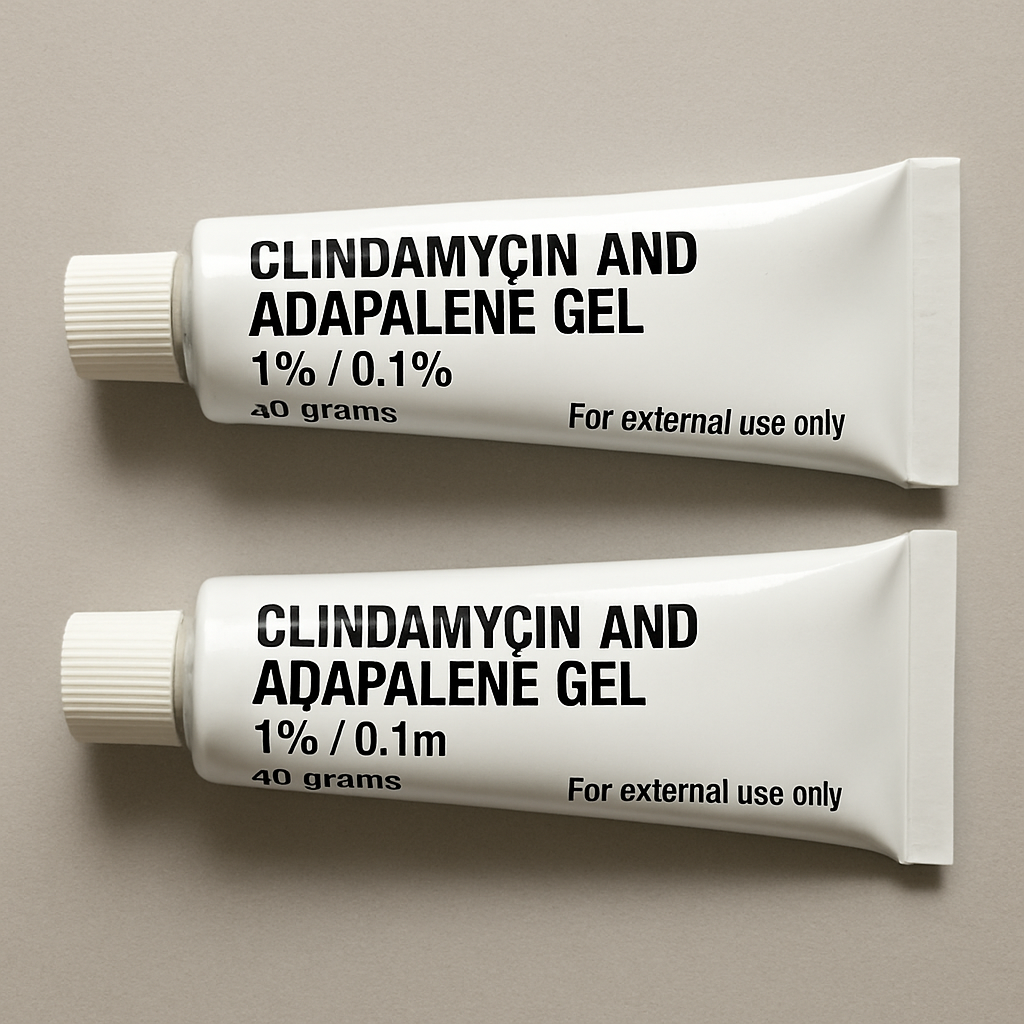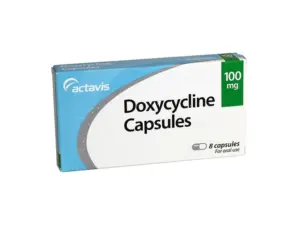Acne is a ubiquitous skin condition, impacting individuals across the globe regardless of age or gender. The quest to find an effective treatment is often fraught with challenges due to the plethora of options available, each with its unique benefits and drawbacks. Among these, Clindamycin Adapalene Gel has emerged as a prominent treatment choice, lauded for its efficacy. This article delves into a detailed comparison of Clindamycin Adapalene Gel against other common acne treatments, equipping you with the knowledge to make informed decisions for your skincare routine.

Clindamycin Adapalene Gel stands out due to its dual-action formula, combining the antibacterial prowess of clindamycin phosphate with the exfoliating power of adapalene. This synergistic approach not only combats acne but also prevents its recurrence. Let’s explore the unique properties of its active components and how they work together to treat acne effectively.
Composition and Mechanism
- Clindamycin: As a potent topical antibiotic, clindamycin is adept at targeting acne-causing bacteria on the skin. It effectively reduces bacterial proliferation, which subsequently decreases inflammation—a key factor in acne development. By controlling bacterial growth, clindamycin helps in preventing infections that exacerbate acne flare-ups.
- Adapalene: A third-generation retinoid, adapalene is renowned for its ability to normalize the shedding of dead skin cells. This process prevents clogged pores, which are a primary cause of acne lesions. By ensuring regular skin cell turnover, adapalene aids in maintaining clear pores, thereby mitigating the risk of new acne formation.
Benefits of the Combination
The integration of clindamycin and adapalene in a single gel formulation offers a comprehensive treatment strategy. The antibiotic action of clindamycin works in tandem with the retinoid effects of adapalene, tackling acne from multiple angles. This multi-faceted approach not only reduces existing lesions but also prevents future breakouts, making it a compelling option for individuals seeking long-term acne management.
Application and Usage
Using Clindamycin Adapalene Gel requires adherence to a specific application regimen for optimal results. Typically, it is applied once daily, preferably in the evening after cleansing the skin. A thin layer should be evenly spread over the affected area, avoiding contact with the eyes, mouth, and mucous membranes. Consistent use is key, and users should be prepared for an initial period of irritation as the skin adjusts.
Other Popular Acne Treatments
Exploring alternative acne treatments provides valuable insights into the diverse approaches available for managing this condition. Each treatment has its unique mechanism, effectiveness, and potential side effects, making it crucial to understand how they compare with Clindamycin Adapalene Gel.
Benzoyl Peroxide

Benzoyl peroxide is a staple in over-the-counter acne solutions, known for its ability to eradicate bacteria and reduce inflammation. It is a versatile ingredient found in various formulations, from creams to gels and washes.
Mechanism and Benefits
Benzoyl peroxide works primarily by releasing oxygen into the pores, creating an inhospitable environment for anaerobic bacteria like Propionibacterium acnes, a common acne-causing pathogen. This antibacterial action is complemented by its ability to peel away dead skin cells, further aiding in unclogging pores and reducing acne lesions.
Side Effects and Considerations
Despite its effectiveness, benzoyl peroxide can cause skin irritation, leading to dryness, redness, and peeling, especially with higher concentrations. Users should also be cautious of its bleaching effects on hair and fabrics, necessitating careful application and handling. Gradual introduction into the skincare routine can help minimize irritation.
Salicylic Acid
Salicylic acid, a beta-hydroxy acid, is another popular choice for acne treatment, particularly effective for mild to moderate cases. It is a common ingredient in cleansers, toners, and spot treatments.
Exfoliating Properties
Salicylic acid excels at exfoliating the skin by penetrating deep into the pores and breaking down the glue-like substance that holds dead skin cells together. This action not only unclogs pores but also prevents future blockages, making it a preventative measure against acne formation.
Suitability and Side Effects
Salicylic acid is generally well-tolerated, making it a suitable option for individuals with sensitive skin. However, it can still cause dryness and irritation, particularly when used in conjunction with other acne treatments. Users are advised to start with lower concentrations and gradually increase usage as their skin builds tolerance.
Topical Antibiotics
Topical antibiotics, including clindamycin, are often prescribed to reduce bacterial growth and inflammation. They are commonly used in combination with other treatments for enhanced efficacy.
Role in Combination Therapy
Topical antibiotics are rarely used alone due to the risk of antibiotic resistance. Instead, they are frequently paired with benzoyl peroxide or retinoids to combat acne from multiple fronts. This combination approach not only enhances treatment outcomes but also mitigates the risk of resistance.
Limitations and Resistance
While effective, the overuse of topical antibiotics can lead to diminished efficacy over time. It is crucial to follow medical guidance and limit the duration of use to prevent resistance. Regular monitoring by a healthcare professional is recommended to assess treatment progress and make necessary adjustments.
Oral Medications
For severe acne cases, oral medications may be prescribed. These include systemic antibiotics, hormonal treatments, and isotretinoin, each addressing different underlying causes of acne.
Systemic Antibiotics
Oral antibiotics work throughout the body to reduce bacterial presence and inflammation. They are often prescribed for moderate to severe acne but are typically used for limited periods to prevent resistance.
Hormonal Treatments
Hormonal treatments, such as oral contraceptives or anti-androgens, are effective for acne linked to hormonal imbalances. By regulating hormone levels, these treatments help control sebum production and reduce acne severity.
Isotretinoin
Isotretinoin, a powerful retinoid, is reserved for the most severe acne cases. While highly effective, it comes with significant potential side effects, including teratogenic risks, requiring strict medical supervision and adherence to safety protocols.
Comparing Efficacy and Side Effects
Effectiveness
The effectiveness of acne treatments varies based on the severity of the condition and individual skin types. Clindamycin Adapalene Gel is particularly effective for moderate to severe acne due to its dual-action formula. The combination of antibiotic and retinoid properties targets multiple acne-causing factors, leading to significant reductions in lesions and improved skin texture.
Mild to Moderate Acne
For mild to moderate acne, treatments like benzoyl peroxide and salicylic acid are often sufficient. They effectively address surface-level acne and are well-suited for those with sensitive skin. These treatments, however, may not provide the comprehensive results needed for more severe cases.
Severe Acne
In severe acne cases, oral medications, including systemic antibiotics and isotretinoin, may be necessary. These treatments offer deep and systemic intervention, but their use requires careful consideration due to potential side effects and the need for medical supervision.
Side Effects
Understanding potential side effects is crucial when choosing an acne treatment. Clindamycin Adapalene Gel, like many other treatments, can cause skin irritation, redness, and dryness. These side effects are typically mild and subside as the skin adapts to the treatment.
Managing Side Effects
Proactive management of side effects can enhance treatment adherence and outcomes. Gradual introduction, consistent moisturizing, and sun protection are recommended to minimize irritation. Communication with a healthcare provider is essential to address any persistent or severe side effects.
Comparisons with Other Treatments
Benzoyl peroxide and salicylic acid share similar side effect profiles, with dryness and irritation being common. Oral medications, particularly isotretinoin, have more serious side effects, necessitating regular monitoring and follow-up with a healthcare professional.
Which Treatment Is Right for You?

by Daniil Lebedev (https://unsplash.com/@danikswan_visuals)
Choosing the right acne treatment involves considering multiple factors, including acne severity, skin type, and previous treatment experiences. A personalized approach, often guided by a dermatologist, ensures optimal outcomes and minimizes adverse effects.
Personalized Skincare Assessment
A thorough assessment of your skin type and acne severity is the first step in determining the most suitable treatment. Dermatologists can provide valuable insights and recommend treatments tailored to your specific needs, ensuring a targeted and effective approach.
Treatment Combinations
Combining treatments can enhance efficacy, particularly for persistent acne. Clindamycin Adapalene Gel, for instance, can be used alongside other topical or oral treatments to achieve comprehensive results. Such combinations should be guided by a healthcare professional to avoid adverse interactions.
Long-term Management and Maintenance
Achieving clear skin often requires ongoing management and maintenance. Regular follow-ups with a dermatologist ensure that your treatment plan remains effective and adjusts to any changes in your skin condition. Consistent skincare practices, including cleansing and moisturizing, support treatment outcomes and prevent future breakouts.
Conclusion
Clindamycin Adapalene Gel offers a robust solution for individuals battling moderate to severe acne, thanks to its unique combination of an antibiotic and a retinoid. While it presents a compelling option, consulting with a dermatologist is crucial to tailor a treatment plan that aligns with your skin’s needs and goals.
Remember, patience and consistency are pivotal in the journey toward clear skin. Acne treatments often require several weeks to yield visible results, and ongoing maintenance is essential to sustain improvements. By understanding the available options and collaborating with a healthcare professional, you can navigate the path to healthier skin with confidence.


